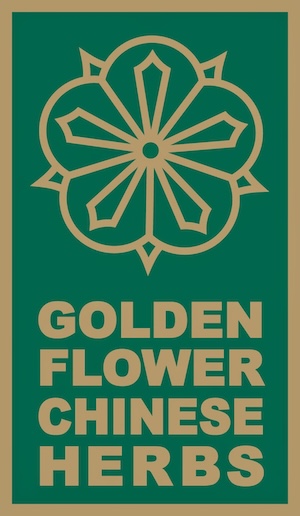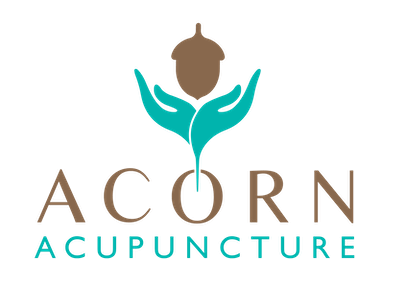Author Guidelines
Download PDF version: CONVERGENT POINTS AUTHOR GUIDELINES (PDF)
AUTHOR GUIDELINES v1.5 - Updated Oct 15th, 2023
CASE REPORT LAYOUT
- Arrange sections of the case report in the order shown below.
- Outline (adapted from CARE Checklist)
- Title, including modality, biomedical diagnosis, and "Case Report"
- Abstract (no more than 250 words), keywords
- Introduction
- Relevant research and traditional sources pertaining to biomedical diagnosis, traditional diagnosis, and case importance
- Case Description
- Patient demographics, including relevant social, economic, and environmental context
- Chief complaint
- History of present illness
- Past medical history
- Diagnostic theory/model and diagnosis
- TCM, Five Elements, Channel Theory, Japanese Meridian Therapy, Classical Chinese Medicine, etc.
- Differential diagnoses and diagnostic translation, i.e., evidence to support theory and diagnosis, clinical judgment
- Results of radiographic, laboratory, or orthopedic testing when applicable
- Treatment
- Therapeutic intervention, including technique, dosage, and frequency of treatment Note: For acupuncture and associated treatments, see the STRICTA Checklist items 2.0-4.0; for herbal interventions, please see the specific Chinese herbal medicine (CHM-CARE) guidelines.
- Rationale for treatment decisions
- Changes in therapeutic intervention strategy with explanations
- Outcomes
- Clinician and patient-assessed outcomes
- Intervention adherence and tolerability
- Adverse and unanticipated events
- Discussion
- Discussion generated by the case with supporting evidence from the literature
- Strengths and limitations of the case report
- Directions for further investigation
- Patient Perspective
- Conclusion
- Summary of main points
- Informed Consent
- Statement of Safety
- References
GENERAL GUIDELINES
- Use the Publication Manual of the American Psychological Association, 7th Edition (APA manual) as a general reference for style.
- For more detailed issues of grammar and punctuation that are not covered in the APA manual, use The Chicago Manual of Style.
SPECIFIC GUIDELINES
Figures, Maps, Illustrations, and Tables
- Upload as separate documents and do not include in the case report itself. Indicated preferred placement of the figure, map, illustration, or table with a legend, for instance, Figure 1.
Length
- 1000-3500 words per case, including references. Cases series and special reports may be longer.
Margins
- Left margin: 1.5 inches. All other margins: 1 inch, including inserted tables and appendices.
Font
- Use 12-point Arial for text.
- Use 14-point Noto Serif or Times New Roman for headings and subheadings. (See headings section for details.)
- Keep typeface and size consistent throughout the text.
Headings
- Use the five levels of headings as described below.
Heading Level 1* - Centered, Bold, Uppercase, and Lowercase
Heading Level 2 - Flush Left, Bold, Uppercase, and Lowercase
Heading Level 3 - Indented, bold, lowercase, period at the end.
Heading Level 4 - Indented, bold, italicized, lowercase, period at the end.
Heading Level 5 - Indented, italicized, lowercase, period at the end.
* Use level 1 for main section headings, such as Methods and Results.
Spacing
- The text of the manuscript should be double-spaced throughout, with the following exceptions:
- Tables and long quotations should be single-spaced.
- References should be single-spaced, with a space between each reference.
- Insert one space (not two) between sentences.
- Insert one space (not two) after a colon.
- Indent the first line of each paragraph. If footnotes are used, indent the first line of each.
Pagination
- All page numbers should be centered and one-half inch from the bottom edge.
- Text pages are numbered with Arabic numerals (1, 2, 3, and so on). The text begins with the Introduction and is numbered consecutively through the References and Appendices.
- If there are preliminary pages before the Introduction, they should be numbered with small Roman numerals (ii, iii, iv, and so on).
Use of Numbers
- Use words to express numbers below 10 and numerals to express numbers 10 and above (e.g., one, two, seven; 14, 21, 567).
- If a sentence (or a paragraph with many numbers) contains numbers less than and greater than nine, all numbers should be numeric to avoid confusion.
- For example, "The dog ate 14 bananas, 2 cookies, 6 pies, and 25 carrots."
- (Sentences such as "The dog ate 14 bananas, two cookies, six pies, and 25 carrots" are confusing and distracting.)
- For items in two different categories in the same sentence, numbers can be spelled out in one category if appropriate.
- Three students ate 5 bananas each, two students ate 10 bananas each, and seven students ate 6 bananas each.
- Common fractions in narrative text should be expressed in words (e.g., one-tenth of the class; a four-fifths majority).
- For decimal fractions, use a zero before the decimal point.
- Numbers immediately preceding a unit of measure should always be in numerals (e.g., 3 ft., 5-mg dose, 12 lbs.).
- Use numerals to express fractional quantities, percentages, ratios, percentiles, time, dates, and ages (e.g., 0.25, 6%, 20th percentile, 6 years old, 5:00 PM, 3 hr 45 min).
- Use words to express any number that begins a sentence. Where this becomes awkward, try to reword the sentence.
Preferred Terms and Common Misspellings
- Healthcare (one word)
- In traditional Chinese medicine, only Chinese begins with an uppercase letter. Most commonly abbreviated as TCM.
- Use acupuncture and Eastern Asian medicine (AEAM) to describe integrated modern and traditional modalities and treatments, or traditional Eastern Asian medicine (TEAM), if the modalities and treatments discussed are traditional.
- In Western medicine and Eastern Asian medicine, Western and Eastern Asian are uppercase. Note: The term biomedicine is preferred since it is the modern standard of care in Asia and many other world regions.
- The term complementary and integrative medicine (TCIM) is preferred to complementary and alternative medicine (CAM).
Medical Terminology
- Names of diseases should be lowercase unless they contain proper nouns—for example, hypertension, cancer, Hodgkin’s disease.
Pharmaceuticals
- The first letter of a brand name drug should be uppercase; the first letter of a generic drug should be lowercase. Example: Tylenol; acetaminophen
TCM/AEAM Herbs
- The names of TCM or other AEAM herbal formulas should be in pinyin, the first letter of each term capitalized because the name of the formula is a proper noun, for instance, Xiao Yao San.
- Terms for individual herbs should also be in pinyin, lowercase, with each term separated by a space; for example, sheng di huang, mai men dong. Tone indications are at the author’s discretion.
- Authors may include the Latin pharmaceutical name in parentheses after single herbs in pinyin, particularly the first time in the case report the term is used, for example, (Astragali Radix).
AEAM Terms in English
- Do not capitalize terms such as wind, fire, damp, heat, and blood. However, make sure their distinction from standard English terminology is clear from context. These terms should be in regular type (not italicized).
- Generally, theories, concepts, and disciplines are also treated as common nouns, not proper nouns, so they are not capitalized—for example, five element theory.
Pinyin Terms
- Standard AEAM terms expressed in pinyin should appear in lowercase regular type—examples: qi, pinyin, zang-fu, yin, yang.
- A general note: In this forum, dedicated to AEAM medical practices, standard pinyin names (proper nouns) and terms are not italicized.
Terms Outside of Standard AEAM Medical Nomenclature
- Lowercase, italicized. Example: hijama, renao
Organ Systems
- The biomedical terms for organs should begin with a lowercase letter—for example, heart, lung, blood, and stomach.
- TCM organ system names should be in regular type, with an uppercase first letter—for instance, Liver (LR), Lung (LU), Heart (HT), Kidney (KI), Pericardium (PC), Spleen (SP); Large Intestine (LI), Small Intestine (SI), Stomach (ST), Gallbladder (GB), Urinary Bladder (UB), Triple Energizer (TE). Note the preferred abbreviations.
- English translations of the extraordinary vessels should be referred to as Governing Vessel (GV), Conception Vessel (CV), Penetrating Vessel, Belt Vessel, Yin Linking Vessel, Yang Linking Vessel, Yin Heel Vessel, and Yang Heel Vessel. The Chinese terms for these vessels should also be capitalized—for example, Yin Qiao Mai.
Point Name Abbreviation and Pinyin
- Point names should be expressed in this order: prefix (two uppercase letters) and the point number with no spaces, followed by the pinyin name in parentheses, with the first letter capitalized—for example, ST36 (Zusanli). Tone indications are at the author’s discretion.
Use of Chinese Characters in Text
- Chinese characters (in text) should appear in parentheses immediately following the English or pinyin term—for example, Gui Pi Tang (归脾丸).
PUNCTUATION AND GRAMMAR
Commas
- In a series of three or more items, use a comma between all items and before the final “and” or “or.” Example: She bought a textbook, a novel, a magazine, and a newspaper.
Commas and Periods within Quotation Marks
- Periods and commas always go within the quotation marks. Example: “The side effects of chemotherapy include nausea, fatigue, hair loss, and loss of appetite,” said Dr. Wang.
- A question mark, exclamation point, dash, or semicolon goes inside only if it is part of the phrase or sentence quoted. Examples: He asked, “Are you ready?” Did she say, “I’m not ready”?
Acronyms
- Spell out the full term on first use, followed by the acronym (uppercase initials) in parentheses. Use only the acronym thereafter (except as below). Example: traditional Chinese medicine (TCM) is a growing field in the United States. Many accredited TCM programs can be found across the country.
- If an acronym is first defined in the abstract, define it again on first use in the manuscript body.
- If the acronym is used infrequently or with long sections between usage, it may be helpful to spell it out again for clarity.
Prefixes
- In general, the prefixes pre and post do not require hyphens. For exceptions and more detailed information, please see the APA manual or The Chicago Manual of Style.
- Examples:
- postoperative; preoperative (But if using the abbreviation pre-op, insert a hyphen.)
- postchemotherapy; prechemotherapy
- postsurgical; presurgical
INFORMED CONSENT FOR DATABASE INCLUSION (optional)
- If you wish, sign and upload the Informed Consent Agreement for Database Inclusion form indicating that you agree (or decline) to have your Case Report considered for inclusion in our research database. Database submission is optional. It is also a big help for gathering foundational, practice-based evidence! Submission for inclusion in the database does not affect the review and acceptance process for case report publication.
CITATIONS AND REFERENCE LIST
Order of Entries
- Place entries alphabetically by the first author's surname (last name). If no author is listed, use the first word of the agency or organization name (e.g., American Cancer Society). If there is no listed author or organization, use the first word of the title.
- If the same author or group of authors writes two documents, order chronologically, with the earliest date first (i.e., an article from 2006 would appear before an article from 2009). If they were published in the same year, list them in alphabetical order by title and add a, b, c, etc., to the date for in-text citations (e.g., McCann, 2016a and McCann, 2016b).
- For assistance with referencing, students may find the software program Endnote or similar products helpful.
In-text Citations
- One author: (Conboy, 2021)
- Two authors: (Conboy & Taylor-Swanson, 2021)
- Three or more authors: (Schnyer et al., 2021)
- Two articles by the same author/s, published in the same year (Riley, 2021a; Riley, 2021b)
- When referring to multiple authors in-text, use the following as examples.
- For two authors, spell the word and, rather than using the ampersand (&) symbol, e.g., "Price and Dabrowski (2021) found that [...]"
- For multiple authors: "Burrell et al. (2021) investigated […]"
Reference List
- For articles with twenty or fewer authors, list all authors.
- For articles with twenty-one or more authors, consult the APA 7th edition guidelines.
- List journal names in full, in italics, for example, Convergent Points: An East-West Case Report Journal
- DOIs and URLs are now both presented as hyperlinks for electronic sources. The label "DOI" is no longer used for entries that include a DOI.
- The words "Retrieved (month) (day) (year) from" (preceding the URL or DOI) are now only used when a retrieval date is also provided in the citation. Example: Kamwo Meridian Herbs. (2020). Shui zhi. Kamwo Herb Guide. Retrieved August 26, 2020 from https://www.kamwo.com/escript/m-herb/m-guide-herbs-details.html?herbInfoId=303
- Include the issue number in parentheses after the volume number, if available. Example: Huo, H.M. (2014). Efficacy observation on acupuncture combined with bloodletting for chronic urticaria. Zhongguo Zhen Jiu, 34(1), 41–43.
Examples
Journal article with fewer than twenty authors
Jing, N., Bin, W., Fuzhuang, W., Hongwei, Z., Huaxin, S., Ninan, Z., Hong, Z., & Qi, X. (2018). Effectiveness and safety of auricular acupoint bloodletting in treatment of insomnia: An assessor-blinded pilot randomized controlled trial. Journal of Traditional Chinese Medicine, 38(5), 763–768
Journal article with more than twenty authors
Holmes, E. A., O'Connor, R. C., Perry, V. H., Tracey, I., Wessely, S., Arseneault, L., Ballard, C., Christensen, H., Cohen Silver, R., Everall, I., Ford, T., John, A., Kabir, T., King, K., Madan, I., Michie, S., Przybylski, A. K., Shafran, R., Sweeney, C. M. … Bullmore, E.(2020). Multidisciplinary research priorities for the COVID-19 pandemic: A call for action for mental health science. Lancet Psychiatry, 7, 547-560. https://doi.org/10.1016/S2215-0366(20)30168-1
Journal article with doi number
Ivanov, A. (2019). The analogy between the traditional Chinese acupuncture and phlebotomy in medieval Bohemia. Journal of Acupuncture and Meridian Studies, 12(4), 136–144. https://doi.org/10.1016/j.jams.2019.05.001
Book
Steinemann, A., Apgar, W. C., & Brown, H. J. (2005). Microeconomics for public decisions. Cincinnati, OH: South-Western.
Chapter in a book
Davis, A.L. (2010). Natural products; unnatural symptoms. In M. E. White & P. R. West (Eds.), Environmental health and the green economy (pp. 47-56). Seattle, WA: Blue Sparrow Press.
- All sources cited in the text must be listed in the References section; all entries in the References section must be cited in the text.
- For correct formatting of additional types of references, such as books, conference proceedings, presentations, personal communications, doctoral dissertations, unpublished materials, online resources, etc., refer to the APA manual, 7th edition.









